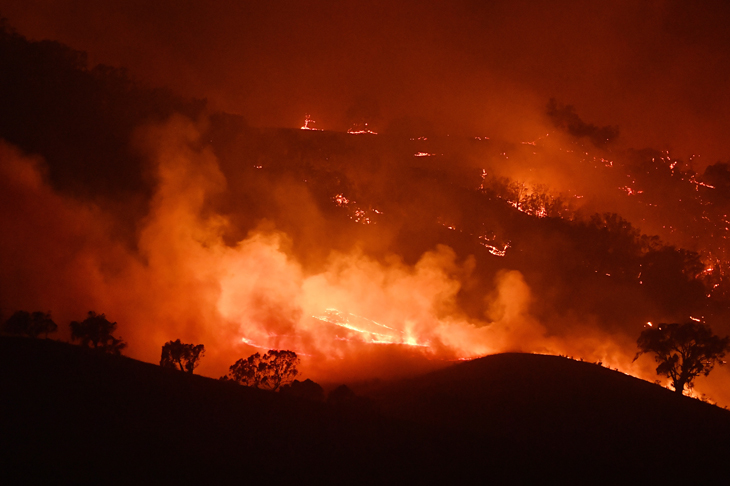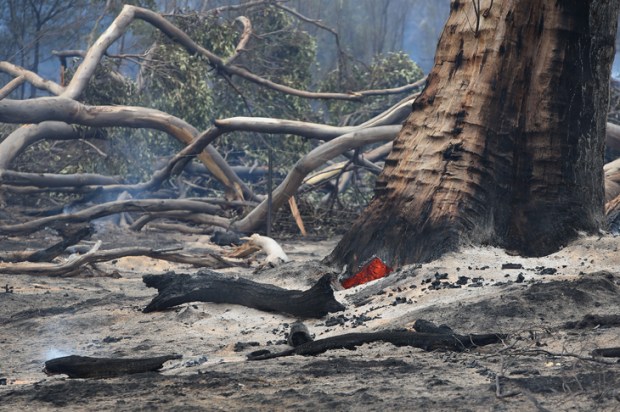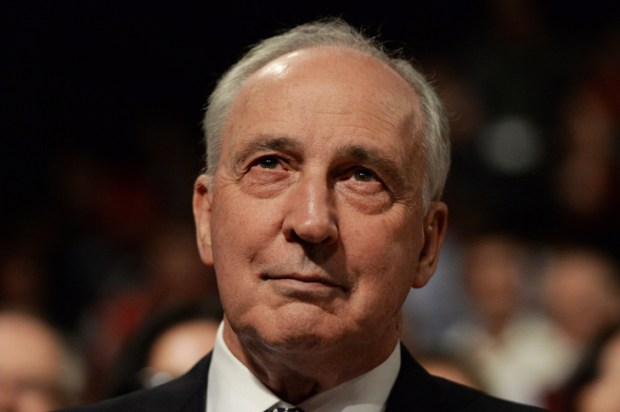If there were an academy award for the most histrionic response to Australia’s bushfires, it would be hard to go past French actress Isabelle Adjani who refused to perform at this year’s Sydney Festival because it would be an act of ‘unspeakable indecency.’ Australia’s bushfires were not a drama, she declared but a ‘human, environmental and political tragedy’ brought on by its ‘imperious climate-skeptical, eco-irresponsible leaders.’ She couldn’t even bring herself to shake hands with the director of the festival, who happens to be indigenous director Wesley Enoch and who knows more about bushfires than she ever will.
The science is settled. Reducing eucalyptus fuel loads by removing their bark, leaves and branches from the forest floor reduces the ferocity of bushfires but the champions of indigenous reconciliation find it impossible to reconcile themselves to the fact that this requires regular burning, a practice engaged in by Aboriginals for millennia.
Bill Gammage, whose 2011 book The Biggest Estate on Earth detailed how Aborigines used fire to shape the landscape, reduce bushfires and ensure continuity and abundance, was panned in a review published by Friends of the Earth, titled, ‘White Australia’s burning issue.’ Gammage was criticised for reporting the observations of early explorers to make his case and for using indigenous learnings ‘in the service of commercial, colonial land-use interests’ to support the alpine grazing lobby who wish to continue grazing cattle in the Alpine National Park.
The Left’s rejection of Aboriginal firestick practices is coupled with a blind devotion to Australia’s pyrophyte plants that rely on fire to kill competitors and regenerate on their land. Joan Webster, author of Essential Bushfire Safety Tips writes, ‘Tigers are native to India. Do Indians keep tigers in their gardens?… So why do we Australians feel a compulsion to surround our houses with native plants… we in effect… build them within a pyre. Ready for a sacrificial burn.’ After the Canberra bushfires in 2001 and 2003, chief minister Jon Stanhope was determined to plant exotic trees that would not pose a fire risk, but says whenever he brought up the subject ‘it was always as though I was suggesting something completely outrageous.’ Since the 19th century, Australia has been exporting eucalypts around the world and with them the bushfires on which they thrive and which now regularly devastate places as far afield as California, Portugal, Spain and Greece. Yet the US environmental group the Sierra Club has faced a pitched battle from tree-hugger denialists who refuse to admit the link between gum trees and bushfires
The Left’s rejection of the science of fire management leads them to turn a deaf ear to natural allies, the CFMEU and the forest industry, who have both called for fuel loads to be reduced in national parks through selective logging and hazard reduction burns. On the other hand, while volunteer firefighters have rightly been praised as heroes, the Left have ignored the fact that in 2019 Daniel Andrews was driven by the firefighters union to dramatically cut funding for the volunteer Country Fire Authority by an estimated $300 million.
The Greens say they support hazard reduction burns ‘but only when guided by the best scientific, ecological and emergency service expertise.’ In practice, it’s a case of jam yesterday and jam tomorrow but never jam today. Protesters at Nowa Nowa in Gippsland, Victoria objected to fuel reduction burns in September and again in October 2019 because ‘Spring burns kill baby birds alive.’ As a result, only 9 hectares were burnt instead of 370. The demonstration was reported by the ABC but mysteriously removed from its website when fires ravaged Nowa Nowa.
Professor of Pyrogeography and Fire Science David Bowman says that ‘since the 1939 Stretton Royal Commission into the Black Friday bushfires, there have been more than 16 major inquiries which have called for greater use of integrated approaches to land use planning and management to minimise disaster risks.
Under Andrews in 2019, Victoria carried out just over half the fuel reduction burns it had planned, burning only one-third of the public land that had been recommended by the Black Saturday bushfires royal commission. Yet the PM’s announcement that he would reduce the threat of bushfires through practical measures such as fuel reduction and zoning rather than bolstering emission reduction targets was met with horror. A commentator at the Guardian called it a sinister shift that, if successful, would ‘signal the end for our planet.’
The peculiar resistance within the Left to admitting that there is anything that can be done to mitigate the threat of bushfires is matched by their refusal to acknowledge that any emissions reductions achieved by Australia over the next decade, which accounts for a little over one per cent of global emissions, would be swamped by increases in China, the largest emitter in the world, which produces 27 per cent of emissions and has said that it will not even start reductions until 2030. China is not only the world’s biggest producer and consumer of coal, it has 245 GW of new coal-fired power capacity under construction. Increased fossil fuel consumption in China drove a four per cent increase in the first half of 2019, the third year of growth.
Meanwhile, in the US, the Left’s bête noire, emissions fell by another 2 per cent without any assistance from the Paris climate accords. It was driven by a massive 10 per cent fall in emissions from the power sector as coal generation fell by 18 per cent, the largest annual decline on record, all driven by market forces because the fracking revolution has made gas cheaper than coal. But that hasn’t altered the Left’s opposition to fracking in NSW and Victoria.
The only response to the bushfires that was more emotional than that of Ms Adjani was the collective outpouring of grief on social media at the estimate by Professor Chris Dickman that the bushfires killed one billion animals. Donations inundated Australia to save singed koalas. Knitters mobilised to knit jumpers for joeys. Yet according to Professor Dickman, the biggest threat to Australian wildlife is not bushfires but cats which kill more than two billion animals every year. There are however more than two billion cat videos on YouTube alone and nothing will persuade those cat fanciers to accept the culling of feral felines any more than we can expect the Left to accept the science of fuel management or the economics of transitional fuels in emissions reductions. Luckily, the Prime Minister doesn’t need the Left, on either side of politics, so he get on with the sensible policies quiet Australians voters endorsed at the 2019 climate change election.
Got something to add? Join the discussion and comment below.
Get 10 issues for just $10
Subscribe to The Spectator Australia today for the next 10 magazine issues, plus full online access, for just $10.
You might disagree with half of it, but you’ll enjoy reading all of it. Try your first month for free, then just $2 a week for the remainder of your first year.














Comments
Don't miss out
Join the conversation with other Spectator Australia readers. Subscribe to leave a comment.
SUBSCRIBEAlready a subscriber? Log in